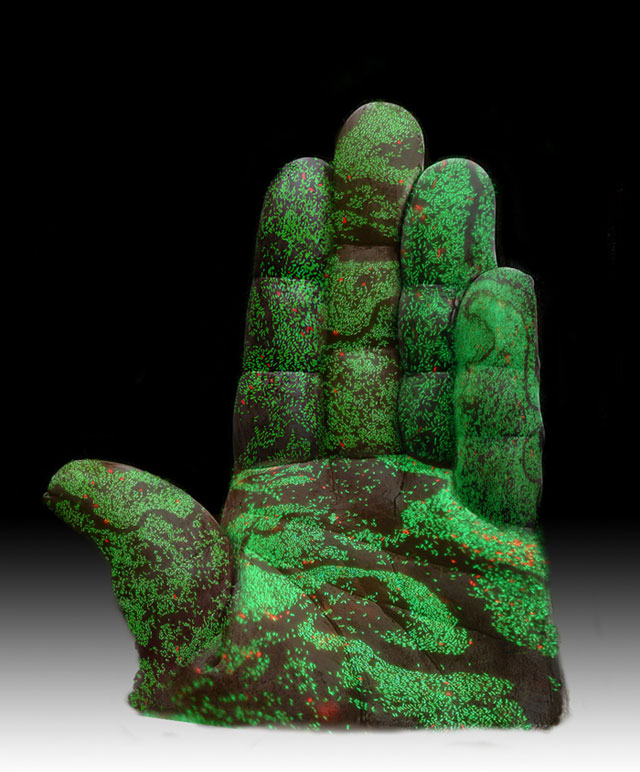A Big Hand for Biofilms

This Research in Action article was provided to Live Science in partnership with the National Science Foundation.
What have we here? An image that represents how strong and prevalent bacteria biofilms are —despite our efforts to control them with antibiotics and other antimicrobial agents. (A biofilm is a layer —or multilayered community —of microorganisms, such as bacteria, that stick together and coat surfaces. Dental plaque is an example.) Human Hand Controlling Bacterial Biofilms, by artist and Stanford University senior scientists and electron microscopy specialist Lydia-Marié Joubert, won a People's Choice Award in a recent science and engineering visualization contest, known as "SciVis", which is sponsored by the National Science Foundation and Science magazine.
To create this striking representation, Joubert used a photo she'd taken of a large garden sculpture, in Wales, by the late artist Francis Hewlett. To this digital image she added layers of micrographs, which are images taken through a microscope —in this case, a microscope that uses properties of fluorescence to generate an image. The microbes seen speckling the hand are enlarged 400 times, according to Joubert. The cultured bacteria show up so vividly because they had been stained with dyes that react variously with specimens depending on whether the organisms are dead or alive —in technical terms, the researchers had used a molecular probe called a viability stain.
In this image, the green bacteria are alive and the very few red ones are dead. "Increased antimicrobial resistance often results from our poor understanding of the microbial lifestyle and our fear of bacteria —as revealed in our preference for antimicrobial household detergents and hygiene products, and warfare against microbes through biocides and pesticides in our gardens and natural environment. This leads to increased persistence of bacterial communities, even after repeated antimicrobial treatment," writes Joubert. "Man endeavors to control, microbes continue to thrive and rule on earth."
Note: NSF and Science will begin accepting entries for the 2014 "SciVis" challenge in September.
See the winner's page, 2013 International Science & Engineering Visualization Challenge.
Editor's Note: Any opinions, findings, and conclusions or recommendations expressed in this material are those of the author and do not necessarily reflect the views of the National Science Foundation. See the Research in Action archive.
Sign up for the Live Science daily newsletter now
Get the world’s most fascinating discoveries delivered straight to your inbox.










